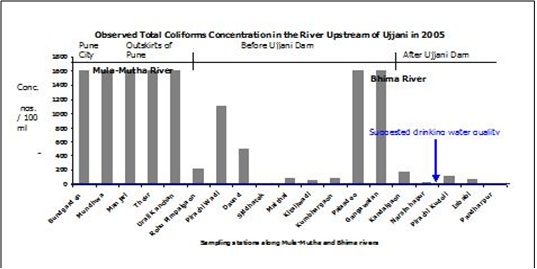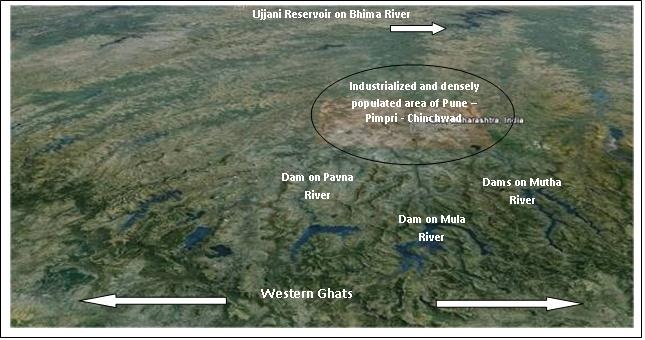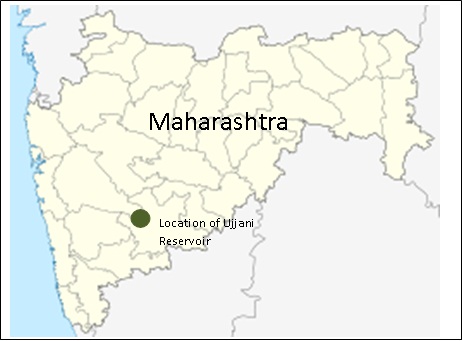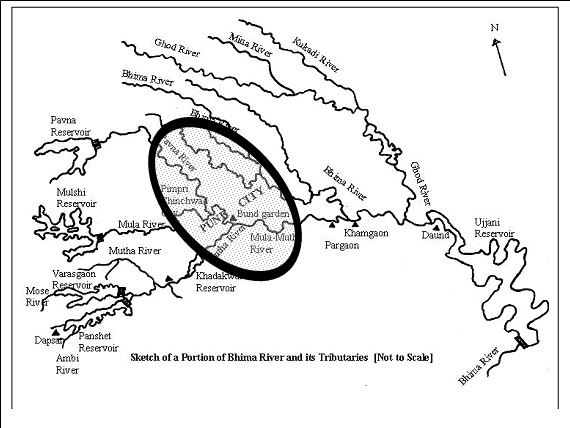Ujjani Reservoir: People’s Initiative for Protection of Water Quality
22.03.2012
-
SUBMITTED ORGANISATION :
-
International Lake Environment Committee Foundation (ILEC) and Shrishti Eco-Research Institute
-
DATE OF SUBMISSION :
-
22/03/2012
-
REGION :
-
Southern Asia
-
COUNTRY :
-
India (Maharashtra)
-
SUMMARY :
-
Lake Yeshwantsagar created by Ujjani Dam backwaters in South Maharashtra, India on Bhima River is a case of downstream rural water rights trampled by gross lacunae in upstream urban culture, city and regional planning of entire catchment. ILEC’s inclusion of Yeshwantsagar as Ujjani Lake in World Lake Vision in 2007 has crystallized involvement and activism – synergizing its regional network partners through field visits, actions, workshops and strategic meetings; creating a platform for catalysis of multiple functional initiatives towards an integrated empowered lake basin sustainability end-game. Upstream urban – rural differences of Infrastructure, Technology, Economy and Culture (ITEC) has severely threatened ecological health of Yeshwantsagar Lake. A sustainability solutions approach with existing initiatives revealed three major threads of synergy namely – rural – rural (integrating 200 villages – Jalbiradari water rights initiative); urban – rural (water festivals – Mutha River Jalmaitri – water friendship and Bhima River Jaldindi – water pilgrimage); and urban – urban (Ramnadi-model stream eco-restoration on 150 streams in Pune – upstream city and joint ward level zero garbage initiative by corporates, Non–government Organisations and Government Organisations in Pune). Strategic thinking for furthering the synergy on water issues, across all existing threads inclusive of above three, revealed that research and networking needed to be intensified in educational, cultural, professional, corporate, social, scientific, technological, spiritual and governance approaches. It can be concluded that as a leading illustration of how people’s involvement created a comprehensive foundation of lifestyle transformations across all dimensions of a lake basin population, the Yeshwantsagar lake’s sustainability programme stands as a unique current example. Urban initiatives can be complemented by the application of eco-technological solutions for non-point sources of pollution in the rural areas to restore the quality of Ujjani Lake with local monitoring of biodiversity. This is an empirical application of the concept of ecosystem productivity for sustainable living of large population along the Ujjani Lake.
-
KEYWORD :
-
Ujjani pollution, people’s initiative, biodiversity monitoring, protection of water quality, sustainable living
-
AUTHOR:
-
Sandeep Joshi Masters in Environmental Sciences, and Doctoral work I in river sediments and Doctoral work II in water and wastewater technologies; total experience of 24 years in the field of environmental monitoring impact analysis, pollution treatment, and ecological restoration of rivers and lakes; innovated eco-technological treatment systems for point and non-point sources of pollution; working on Ujjani Reservoir’s issues of pollution and enrichment of nutrients from last 10 years.








